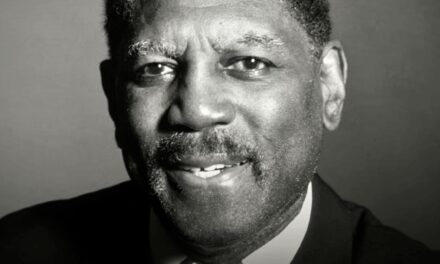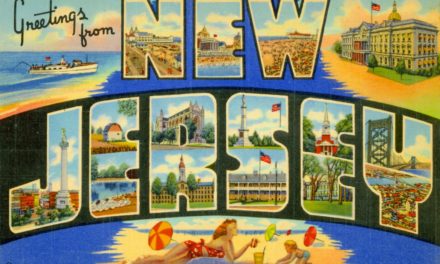“The company lent workers the train fare and provided them with wooden houses amid the aspens and pines in a small place called Weed. It was a company-owned, segregated town, and Black mill workers and their families were required to live on the northern outskirts. That neighborhood was known as the Quarters and, later, Lincoln Heights.
“For decades, Black residents of Weed had their own church, barbershops and nightclubs, according to residents and a 2011 documentary about the neighborhood’s history produced by Mark Oliver, a filmmaker. They were prohibited from being buried in the white-only graveyard, so they had to dig their own. Black people could shop in some white-owned stores and cafes, but they couldn’t linger…
“At the sawmill, white workers were given safer, more lucrative jobs indoors. The only integration came at school — where white and Black children learned together before returning to their cloistered communities — and on the Weed Sons, the town’s baseball team.
“That began to change in the 1950s and 1960s, when the civil rights movement slowly arrived in Siskiyou County. In Weed, Black residents arranged sit-ins at restaurants that wouldn’t serve them and boycotted businesses until they agreed to hire them…
“Lincoln Heights residents said theirs was the kind of neighborhood where children who were spotted misbehaving by a local elder could expect a call to their family home that evening. On Sundays, the Mt. Shasta Baptist Church was full… The center of social life was 13-acre Charlie Byrd Park, named after the first elected Black sheriff in California, who grew up in Weed and led Siskiyou County’s law enforcement agency for 16 years…
“In 1982, the International Paper Company, which had succeeded Long-Bell, sold the sawmill to Roseburg Forest Products, a transaction that residents mark as the beginning of the decline of the local logging business. Around that time, advances in automation and a growing environmental movement curtailed lumber jobs.
“Some found other lines of work at the local community college, the water bottling plant and restaurants, or in nearby towns. But others left the region entirely. In 2020, nearly a third of Weed households lived below the poverty line, according to census data.”
“The city accounts for 6 percent of the population in Siskiyou County, but has 36 percent of the county’s Black residents, based on 2020 census data. It also has a higher share of Hispanic and Asian American residents than the county as a whole.”
It struck me the wrong way –just like Jerry Rubin saying “Don’t trust anyone over 30” all those years ago. Wisdom, like compassion, is not something you can attribute to yourself. All we have is our experiences and our perspectives. I’m sure my POV is very different from yours and all the authentic elders’.
Do we even agree on the facts? At the end of the ’60s, as it became obvious that the various political “movements” were not going to fuse into a party capable of defanging The Great Satan, thousands of disappointed young adults moved to the North Coast where denuded forest land was affordable. These people were essentially (and for understandable reasons) giving up on politics and seeking private solutions to life’s challenges. Beth Bosk, a brilliant publicist, dubbed the migration “the new settler movement,” which gave it a political aura. The new settlers who made a living by growing marijuana helped lead the fight against prohibition. But essentially their so-called movement was in pursuit of private solutions within the system as it now stands. They were saying “CAMP should let us make a living,” not “America needs land reform.”
The Imaginary Party line is there are no private solutions. (Although sometimes, in despair, I think there are only private solutions).
More About Hummingbirds
That $25 hummingbird feeder was the best investment we ever made. All our customers have different techniques. A big male with an iridescent ruby throat is the most confident. He perches and drinks his fill for almost a minute. At the other extreme is the thoroughly nervous Nellie who sips for a microsecond, flies back a few inches and looks in all directions, sips for another microsecond, flies back and looks around, sips for a microsecond and so on and so for 15 or 20 sips. The all-time record is 34.
Here’s a feeder full of hummingbird trivia: Hummingbirds have tongues that are grooved like the shape of a W. Hummingbirds have tiny hairs on the tips of their tongues to help them lap up nectar similar to a cat. A hummingbird’s bill is longer in proportion to its body, as compared to other birds. Hummingbirds have no sense of smell, but can hear better than humans. Hummingbirds are attracted to all bright colors, although red is most prominently associated with them. Hummingbirds see in ultraviolet light and they can see further than a human. Hummingbirds have a great memory, they remember every flower and feeder they’ve been to, and how long it will take a flower to refill. The hummingbird brain is 4.2% of its body weight; this is the largest in proportion of any wild bird. Hummingbirds are the only birds that can fly like a helicopter –up, down, sideways, front, and back! Hummingbirds are the second largest family of birds, with over 300 species. Hummingbirds have weak feet –they mainly use them just for perching. When food is scarce and they are fatigued, hummingbirds go into a hibernation-like state known as torpor to conserve energy. A hummingbird’s heart beats up to 1,260 times per minute. Hummingbirds do not mate for life. A baby hummingbird is roughly the size of a penny and is unable to fly. The average lifespan of a hummingbird is five years, but they have been known to live for more than 10. Hummingbirds fly at an average of 25 to 30 miles per hour, and are able to drive up to 50 mph. Some hummingbirds will travel over 2,000 miles twice a year during their migration… A 6-year-old once told me he had seen 43 on a weekend camping trip to Yosemite.
Wish I was a hummingbird, just three inches high
Anybody bothers me I’d pick up and fly
Forwards, backwards, you hardly have to try
If you are a hummingbird just three inches high
Oh to be a hummingbird buzzin in the breeze
Suckin the flowers, zoomin the trees
Touch of green around my throat, dapper as you please
If I was a hummingbird buzzin in the breeze
Peacock he got the color, whippoorwill can sing
Wild geese can fly information on the wing
Stork brings you baby, baby, robin brings you spring
But hummingbird gets you high if speed is your thing
Hummingbird, hummingbird floating in the air
Staring at the children returning the stare
Look ye at that angel with the curly golden hair
Wishin’ he was a hummingbird floating in the air
High in the Sierra, low along the Cape
Where’er there’s wine in the berry or the grape
I’ve seen forty-three they’re all but one shape:
Long as a pure delight, narrow as escape.
Apologies to Dayla Hepting for the misspelling of her name last week –the damn spellcheck algorithm tried to do it again just now… Misspelling Chuck Dederich’s name was my own doing… I expanded the piece about Dylan’s “Philosophy of Modern Song” and added some relevant graphics. Hoping the new version goes up online, FG



